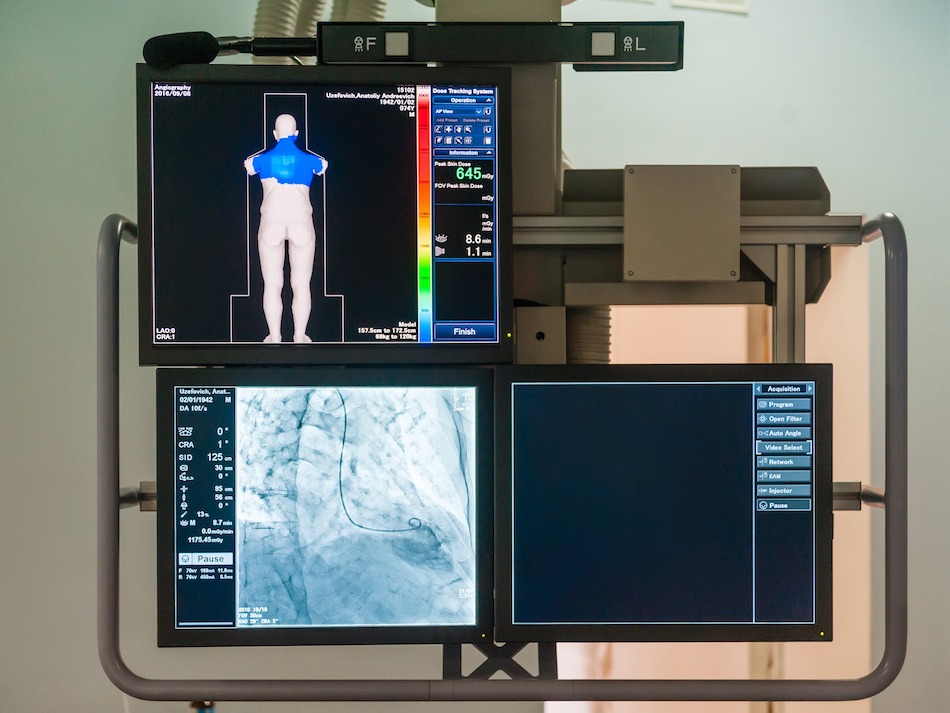Angiography is a medical imaging technique designed to visualize and therefore study blood vessels and their dividing branches that are not visible on standard radiography.
Arteriography is also used to refer to the exploration of arteries and phlebography to refer to the exploration of veins.
Angiography is the visualization of the body's blood vessels. It may have a diagnostic or therapeutic purpose.
Angiography is an examination to investigate and identify the cause of a blood vessel abnormality such as blockage (thrombosis) or narrowing (stenosis) of a vessel, a possible malformation of arterial or venous vessels or an aneurysm.
The examination is based on a medical imaging technique that combines the use of a contrast agent (blood-injected dye) and X-ray radiography.
Angiography makes it easier to diagnose certain diseases and to establish a better treatment plan, which It can be endovascular, medicinal or surgical. It is also a serious ally before surgery, so that the doctor can accurately track the path of blood vessels.
Duration of hospital stay
1 day.
The patient can go home after the angiography.
Average length of stay
1 to 2 days.

Every year, nearly 11 million patients go abroad in search of medical care. At MEDICAIM, we provide our patients with access to the best hospitals and doctors around the world. Contact us to learn more about your treatment options.
Ask for your free quote abroad
Start your medical stay by requesting a quote. Our customer service department will help you find the clinic that best suits your needs and get you a quote.
Before an angiography, do not eat or drink for 6 to 8 hours.
It is important to inform the medical team of any treatments taken and, for example, to bring prescriptions or medical records.
The patient lies on an X-ray table, the examination is performed under local anesthesia, usually on an outpatient basis, by a radiologist.
Depending on the area under examination, the puncture may be performed on the fold of the groin (femoral artery), the fold of the elbow (humeral artery) or the neck (carotid artery). In the case of venous angiography, the puncture is performed on the femoral vein, the jugular vein, or the back vein of the hand. The puncture allows a small plastic tube called a "catheter" to be inserted into the artery/vein and guided through the vessel under the control of a screen.
Once on the site to be explored, the doctor injects a colouring product, opaque to X-rays, through the catheter. X-ray imaging is then used to x-ray the targeted artery/vein.

The examination is slightly or not painful. The catheter is finally removed at the end of the procedure and the doctor compresses the puncture site to stop the bleeding.
Contraindications:
Pregnancy and breastfeeding
Not recommended for patients allergic to iodine
MEDICAIM takes care of the follow-up on a case-by-case basis. www.medicaim.com
MEDICAIM is looking for the best specialists for you and we will offer you several renowned doctors.
MEDICAIM organizes your entire stay for you: post-operative nursing care, biological follow-up, therapeutic, nutritional and psychological support.
Any additional questions? Ask your MEDICAIM doctor about it: careteam@medicaim.com
Some needs and conditions are more complex than others. In case of doubt, please send us additional information to establish a customized quote.
Ask for a quoteCertains besoins et pathologies sont plus complexes que d’autres. En cas de doute, faîtes-nous parvenir des informations complémentaires pour établir un devis sur-mesure.
Demander un devisEntrust us with your medical file and it will be examined by a specialist doctor. The goal?
Allow you to evaluate all your treatment options.